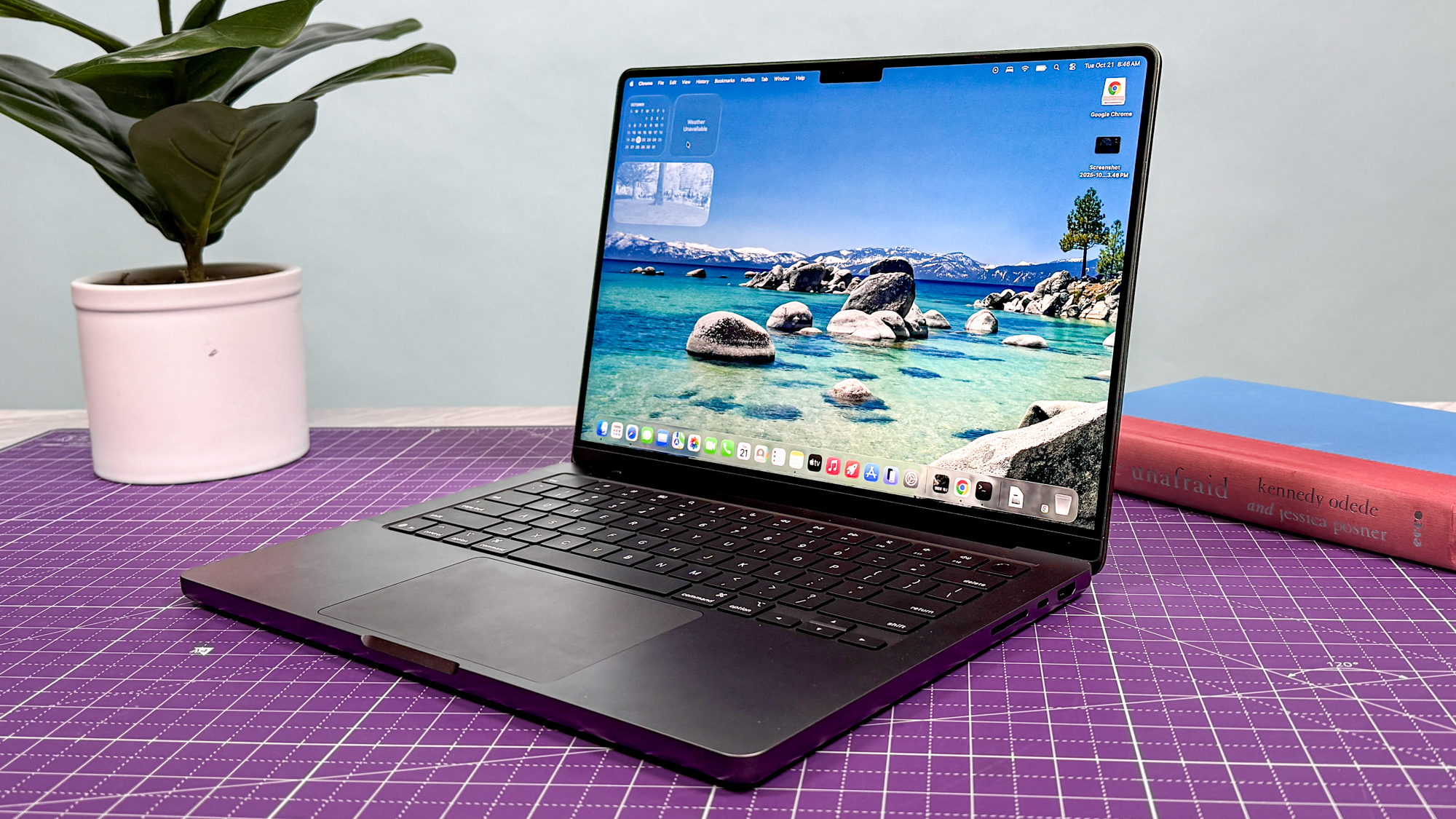Snapdragon 8 Gen 3 promises to have the best performance yet —here's why that really doesn't matter

With the launch of the OnePlus 12 in China this month, and the impending launch of the Samsung Galaxy S24 in early 2024, it seems like the era of the Snapdragon 8 Gen 3 is upon us. Every time Qualcomm releases another version of its flagship chipset, there’s a lot of talk about how powerful the chip is and what benchmarking scores are like. It’s the same with Apple chips, like the A17 Pro found in the iPhone 15 Pro models.
Meanwhile things tend to go in the other direction when it comes to Google’s Tensor chipsets. The semi-custom chips inside Pixel phones are notable for not being particularly powerful. Or at least, not compared to the latest Snapdragon. But raw performance isn’t something the majority of people will ever have to worry about.
Instead, if we’re going to focus on smartphone chip attributes, we should be focusing on all the other things it can offer.
Most people don’t need maximum performance
When it comes to buying a new phone, I can certainly see the appeal of wanting the best possible handset — something performance plays a big part of. And while nobody wants a slow-running phone, how often do you actually use your phone for things that need that much power?
There’s an argument to be made for high-end mobile gaming or work that requires a lot of processing power like video editing. But if you’re just buying a phone for pretty casual use, like daily browsing, media streaming and photography, then maximum performance isn’t something you really need in a phone. Buying a phone for the best possible performance is like buying a gaming PC with an RTX 4090 graphics card and only ever using it to play Stardew Valley.
Sure it’s nice to have that option of more power, especially if you’re keeping hold of a phone for multiple years. But for the casual owners, you’re not going to come anywhere close to hitting your phone’s peak performance on a regular basis — or possibly even on the rare occasion that you do end up needing to tap into a little more computing power than normal.
A lot of this talk about phone chip performance stems from benchmarking tests, which only ever tell part of the performance story. The tests your phone goes through end up working individual parts of the system rather than the phone as a whole. So you’re not actually getting an accurate representation of the phone’s real world performance. Plus those tests only really gauge a component’s peak performance over the course of a few seconds, rather than as a sustained workload.
Get instant access to breaking news, the hottest reviews, great deals and helpful tips.
That’s also assuming that your phone’s manufacturer hasn’t been trying to cheat the system. There have been instances where phone makers have developed systems that detect when benchmarking is happening, and unlock resources that aren’t normally available during regular use.
Benchmarking scores are only part of the equation
A phone’s chipset is more than just the workhorse. Part of the reason why phones (and other electronics) are powered by a “system on chip” (SOC) is that all the necessary components are crammed onto that single tiny chip. That means there’s more than just a CPU and GPU, and it’s the additional components that can help make different chips stand apart.
Take Google’s Tensor, for instance. By all accounts it lags behind the competition in terms of benchmarking scores and overall power efficiency. But that chip has the parts needed to let Pixels do things that no other smartphone can — especially in the realm of machine learning. It’s the Tensor that enables recent Pixel devices to have features like Photo Unblur, Audio Magic Eraser and so on.
Qualcomm has been no stranger to adding AI capabilities to its chips, but Snapdragon 8 Gen 3 has taken things to a new level — offering support for multi-modal generative AI. It also has an improved Image Signal Processor, which promises to power all new camera capabilities. While we’ve yet to see any of this translate into real world capabilities, it shows that there’s more to Qualcomm’s latest chip than pure performance.
Not that the company is likely to shy away from any claims of performance prowess, especially if those benchmarking scores manage to catch or exceed the iPhone 15 Pro and iPhone 15 Pro Max.
Improving performance with subsequent generations of chips is a good thing. It means our phones can do more things, and new software can expand beyond the limitations of the existing hardware. But that’s not all new chips can do, and these extra features are way more interesting than a phone that can handle heavier workloads.
Efficiency trumps peak performance
When it comes down to it, we’ve seen time and again that efficiency is the one thing that all smartphone components should be striving toward — particularly the central chipset. The iPhone 12 is a good example of this, and had a notoriously power-hungry 5G modem that had a massive impact on battery life. With 5G enabled it clocked in 8 hours and 25 minutes in our battery testing.
Meanwhile turning off 5G in favor of 4G saw that time extend to 10 hours and 23 minutes. And that was after the iPhone 11 scored even higher at 11 hours and 16 minutes. The next year Apple seemingly managed to solve this problem, since the iPhone 13 scored 10 hours and 33 minutes with a 5G connection.
A similar situation can be found with the Samsung Galaxy S22, which scored a meager 7 hours and 22 minutes in our battery testing. The next year, the Galaxy S23 came with a Snapdragon 8 Gen 2 for Galaxy chipset — a chip already notable for boosting power efficiency. It’s not all that surprising that the battery life on the S23 jumped to 10 hours and 27 minutes in the process.
Often, high performance can correlate with higher battery drain, which is why boosting the efficiency is just as critical. It’s not just about the power consumption either. Inefficient processing generates additional heat, and if that's sustained over lengthy periods of time, it can damage your phone’s innards — batteries in particular.
There are measures in place to stop your phone from overheating and causing damage in this manner. That means there’s a balancing act between high performance and how much heat the phone can actually dissipate. If you’re phone is running too inefficiently, it’s going to heat up pretty quickly and that’s going to lead to performance being throttled to try and get the situation under control. The more efficient things are, the more of a workhorse your phone can be. Just look at what happened when Macs switched over from Intel chips to the Apple Silicon M series.
It’s one of the reasons why Apple’s move to 3nm chips is such a big deal, or why 4nm Qualcomm chips can outperform 5nm Exynos chips, such as the ones Google used as the basis for Tensor chips. As we've seen so far, these smaller chips are designed to increase performance and efficiency as they shrink. Better performance certainly looks great on paper, but it would be worthless if efficiency didn’t scale with it.
Bottom line
Advances in mobile chips can offer a great many things, but better performance power is only one part of that equation. You definitely don't want a phone that runs slowly, but at the same time there's a limit to how much power you actually need for optimal everyday performance.
Really, these chips focus less on benchmark scores and clock speeds, and more on all the other things they can do — how much more efficient they run compared to previous years, what special features you get thanks to that specific chipset and so on. It's not like these things don't get mentioned, but they often end up taking a backseat while performance is hyped to unnecessary degrees.
So next time you're out looking for a phone, and there's no brand loyalty swaying you one way or the other, just bear that in mind.
More from Tom's Guide
- Galaxy S25's chip could be more powerful than the iPhone's — what we know
- Not a typo! iPhone SE just dropped to $71 in holiday deal
- Meta’s new VR headset looks just as weird as Apple Vision Pro

Tom is the Tom's Guide's UK Phones Editor, tackling the latest smartphone news and vocally expressing his opinions about upcoming features or changes. It's long way from his days as editor of Gizmodo UK, when pretty much everything was on the table. He’s usually found trying to squeeze another giant Lego set onto the shelf, draining very large cups of coffee, or complaining about how terrible his Smart TV is.
